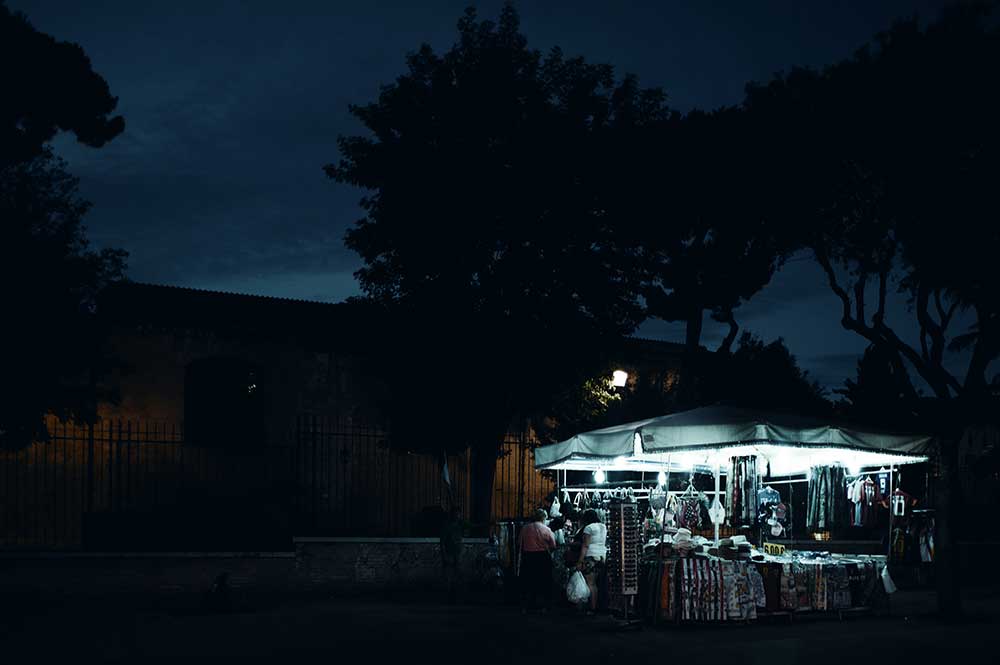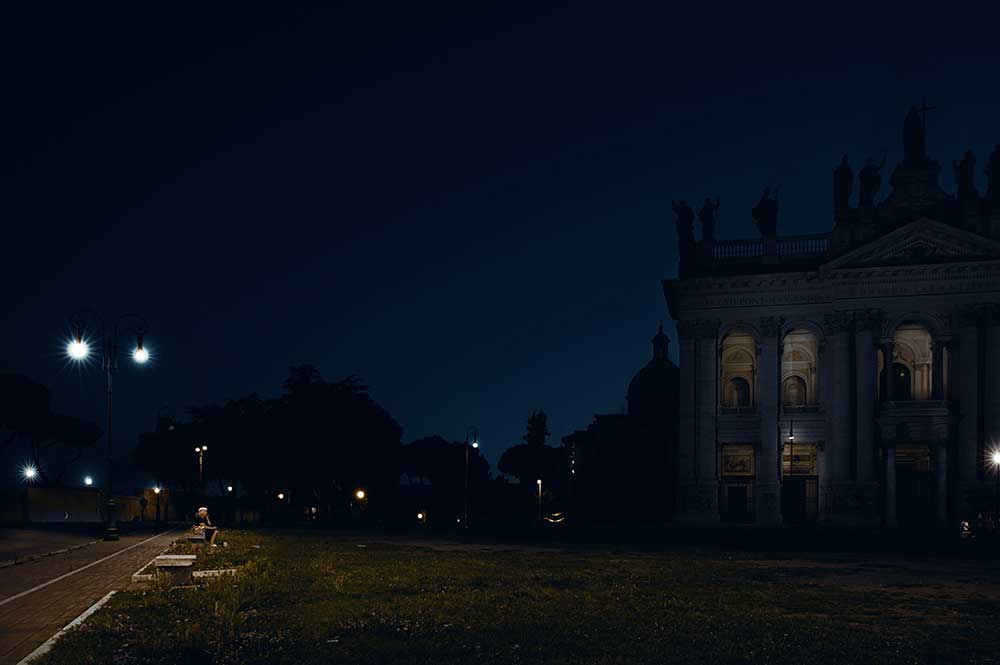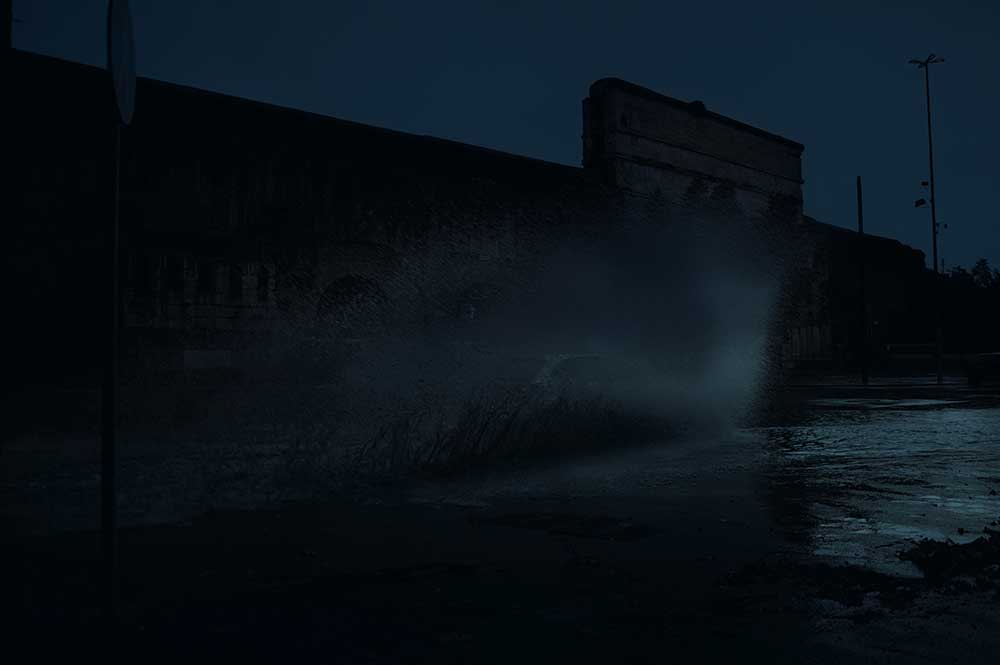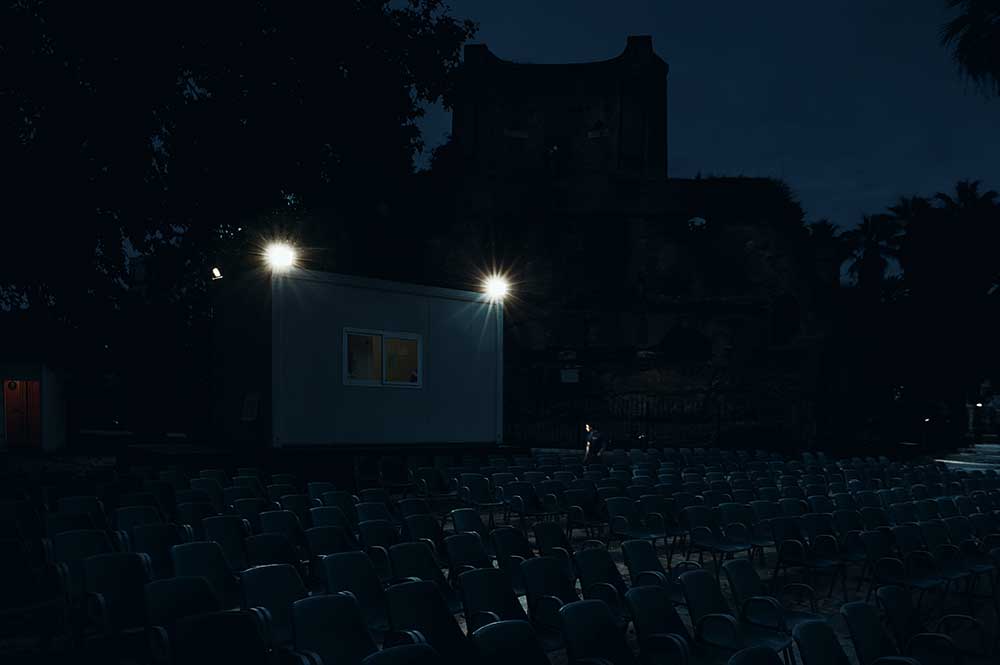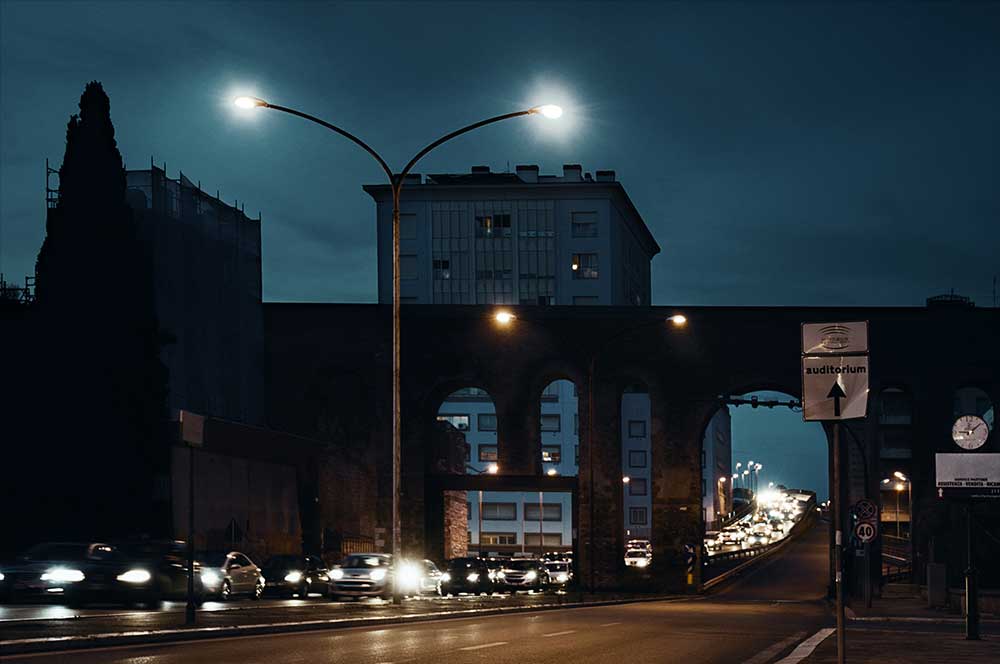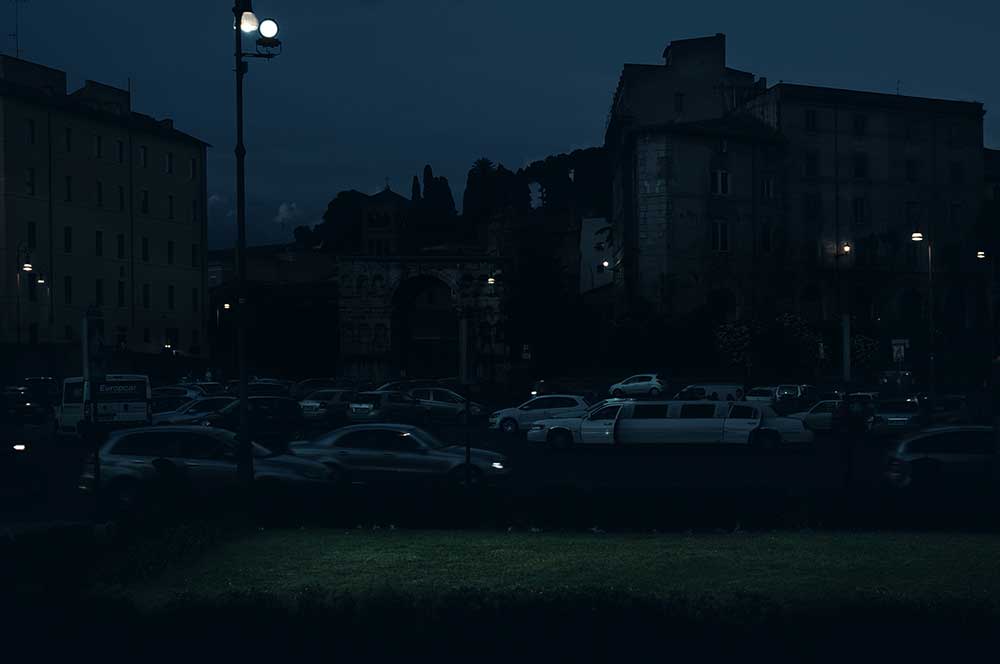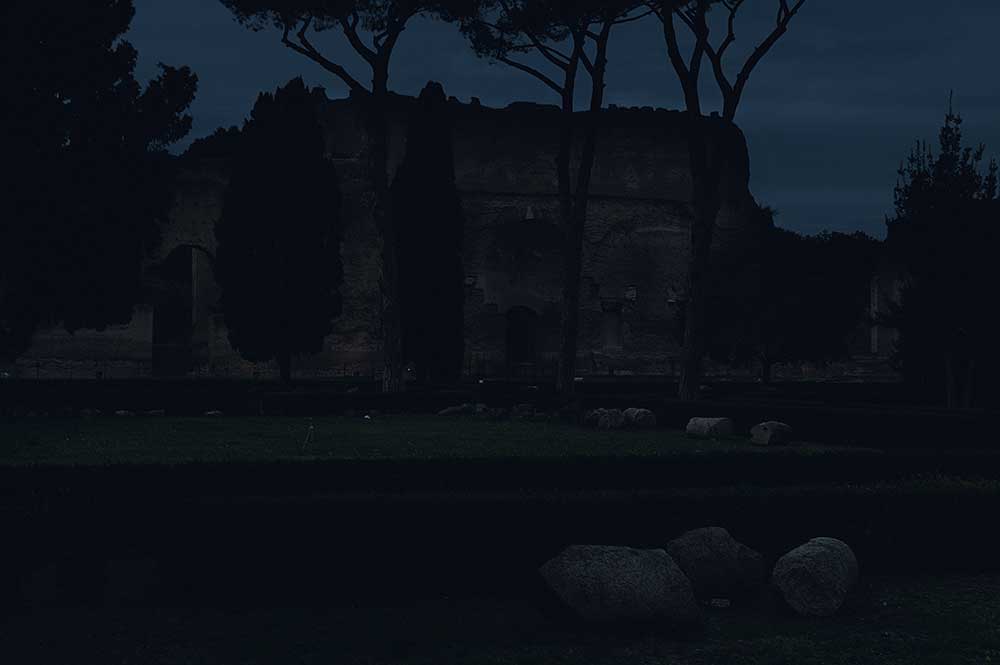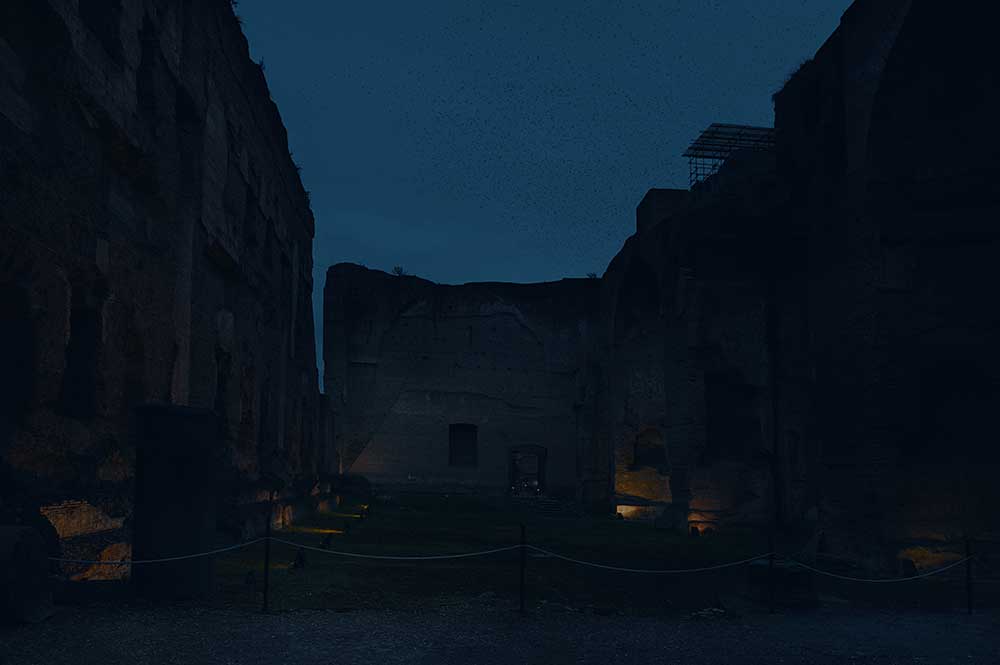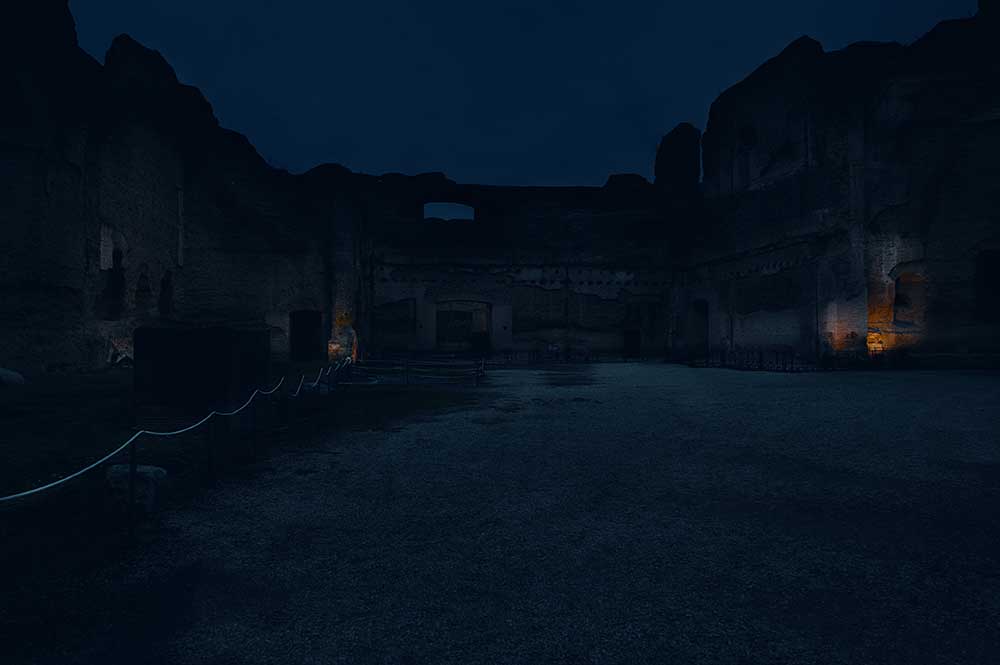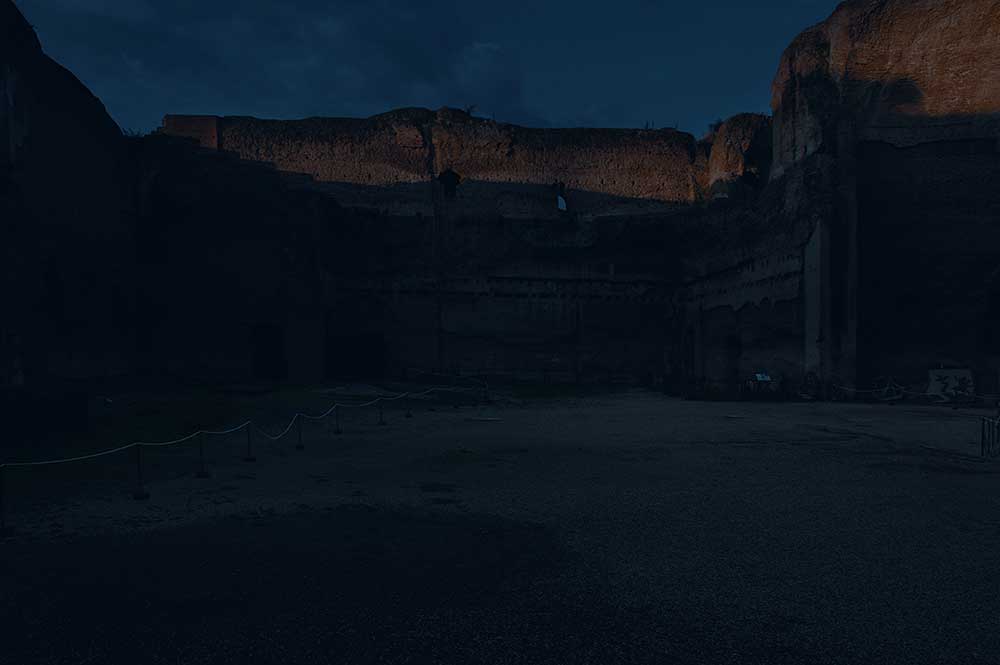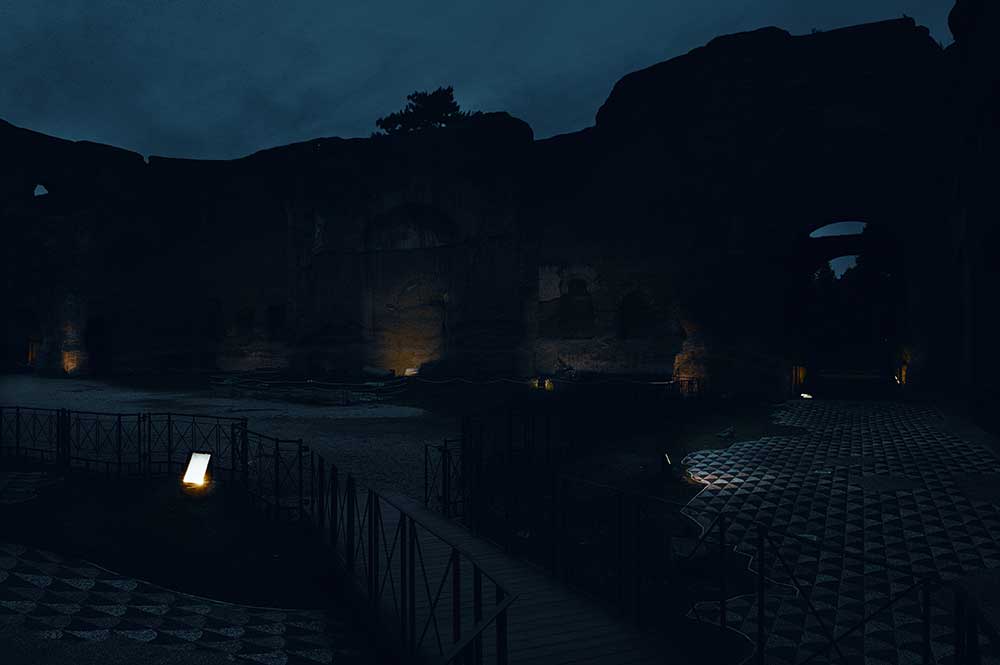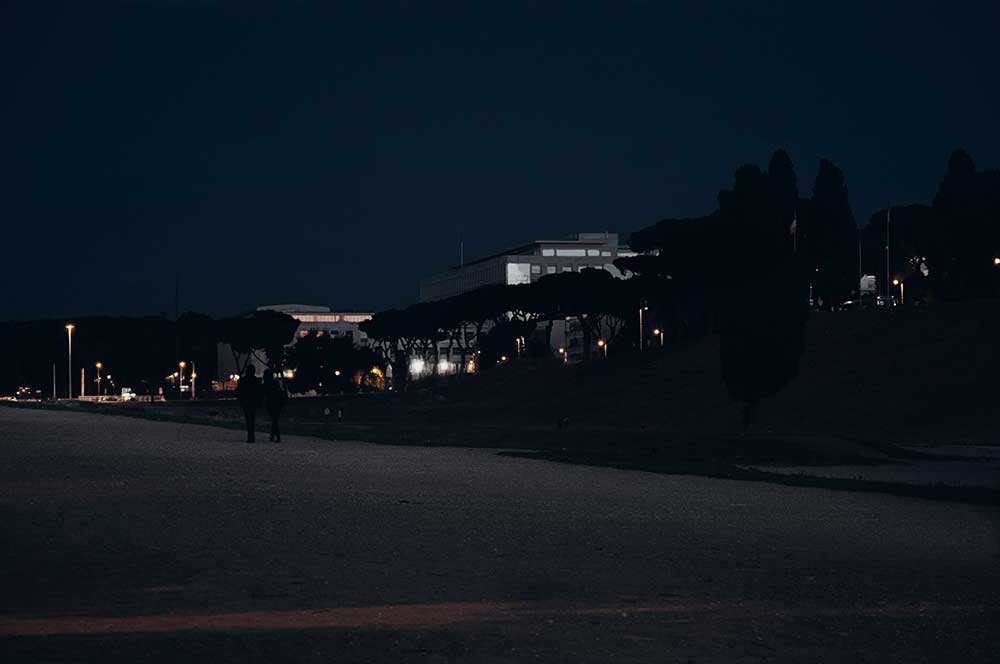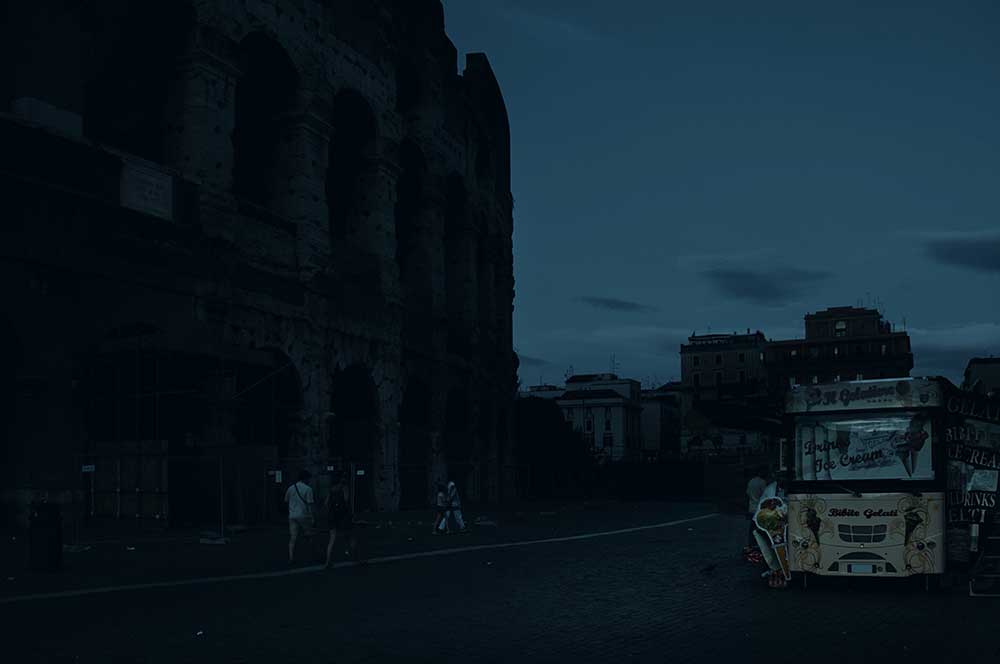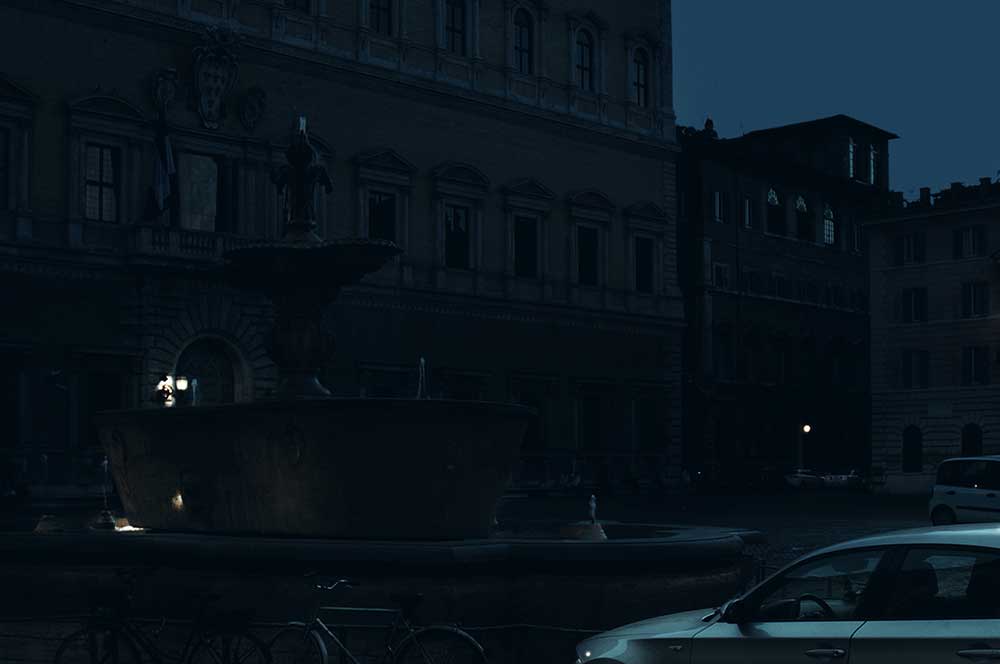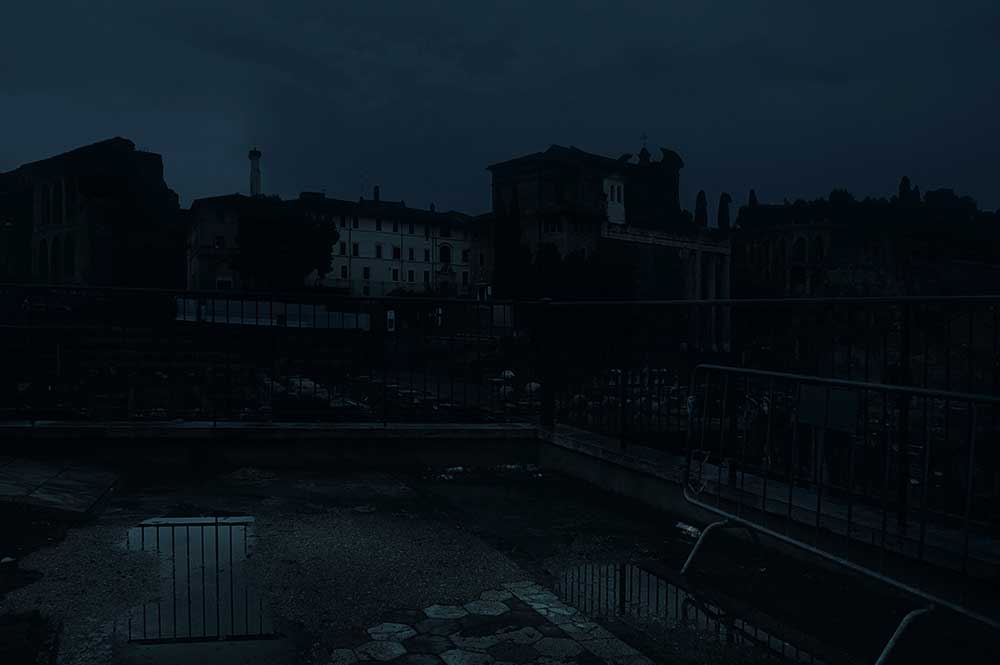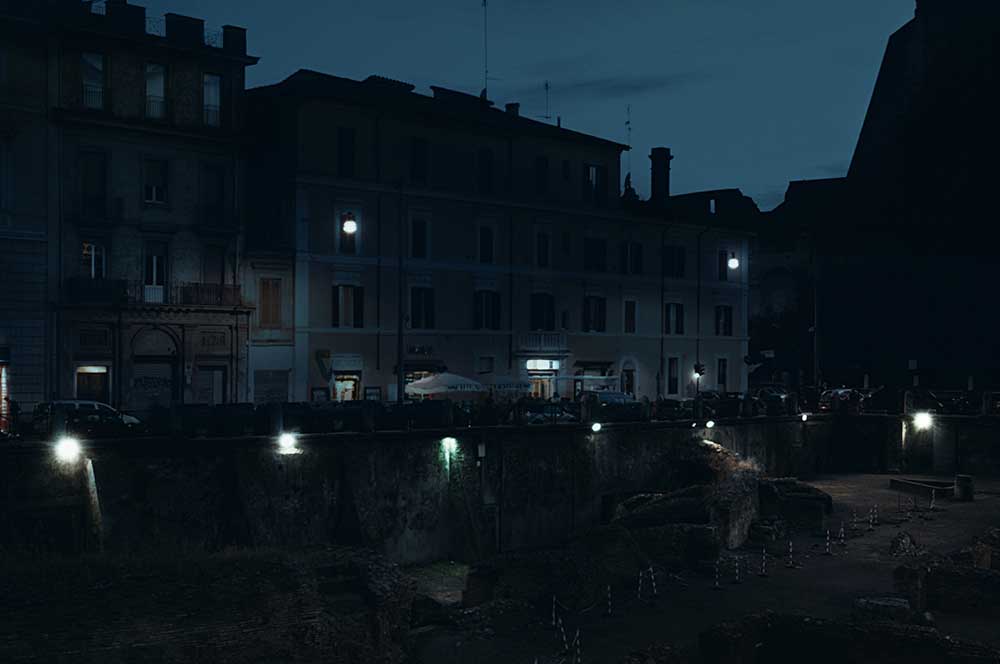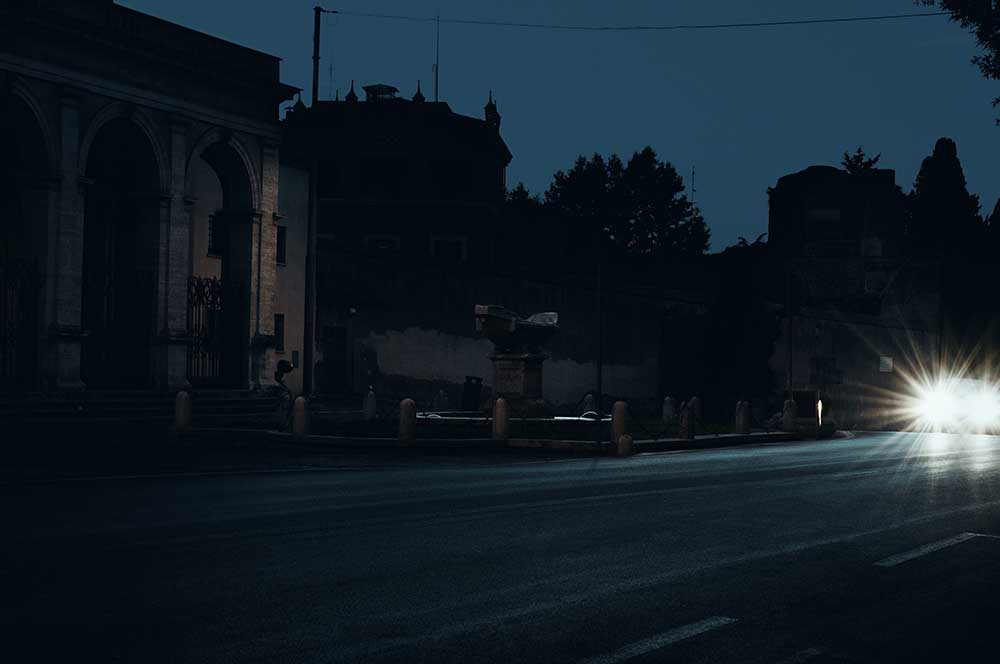The blue hour is the investigation of Rome who is working Federico Massimiliano Mozzano; is the synthesis of his careful look to seize the traces of the past in contemporary times.
The blue hour is the day falling in the night. A few minutes in the sky where there is still a minimum brightness that denes the contours and light up the first lights in the houses and in the streets. The same “riding light” that the first to experience the Alexander the Blasetti film while filming The table of the poor in 1932: “… I asked Montuori to shoot just dropped the sun, taking advantage of the fifteen minutes of the survivor, and still noticeable, diffuse light. He was born on “time on horseback” system at the turn of the day and night …. “(Alexander the Blasetti, The cinema that I lived).
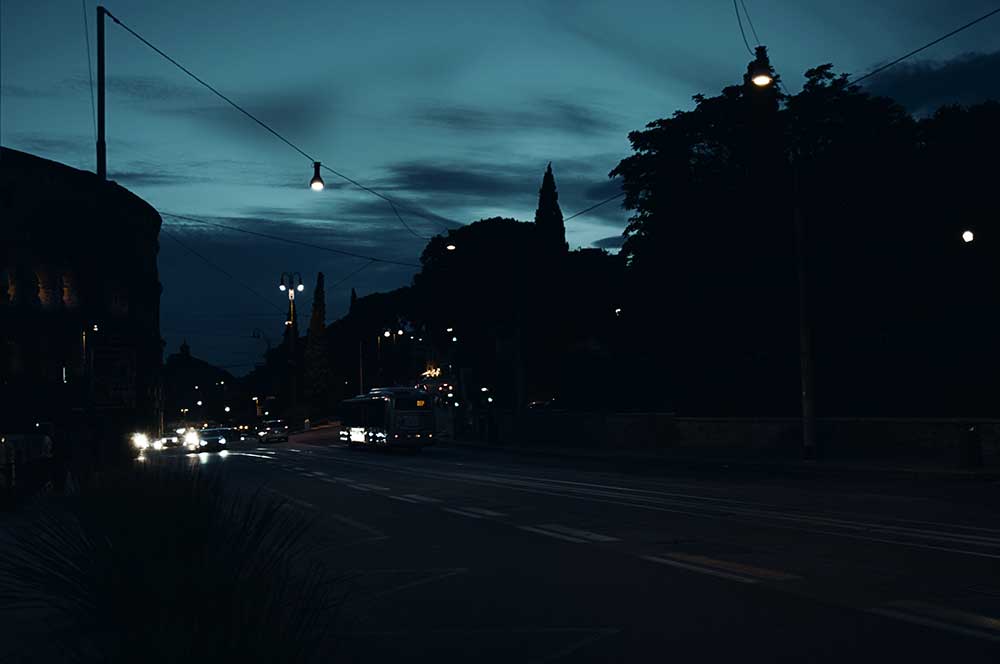
Frederick M. Mozzano offers Rome wrapped in this blue light, often difficult to perceive, too fast in its dissolution in the dark, too small to be noticed in the rush hour in the city. An indefinite time and hour that changes with the seasons, minutes suspended between day and night. This is the time chosen by Mozzano to play Roma in some of his most famous monumental places. Natural light gives way to the artificial one that will rule the night town. Mozzano chooses the best known monumental places of Rome wrapped in a “night effect” that hides them one hasty glance, urging instead to discover them with the eye of patience that adapts to darkness, allowing them to stop these moments otherwise almost imperceptible of everyday life. The blue hour does not stop in Rome, but it provides a development in other places, and is manifested in various hypotheses of creation: a book, an exhibition, a project to broader encompassing different places. -Giovanna Bertelli- [Official Website]
